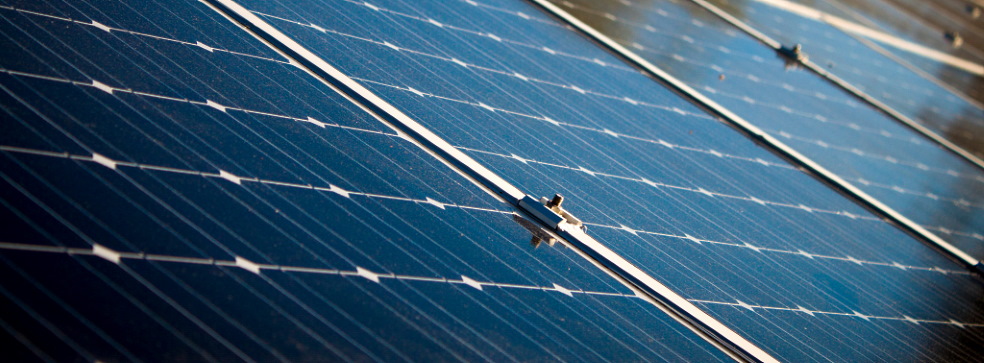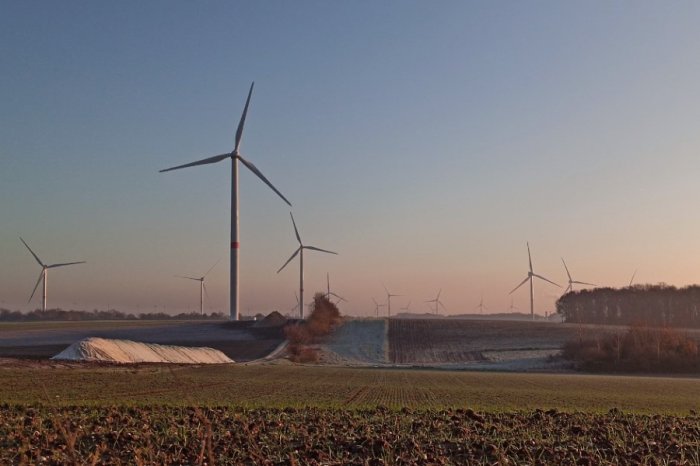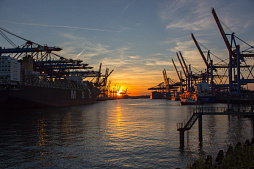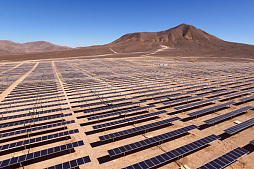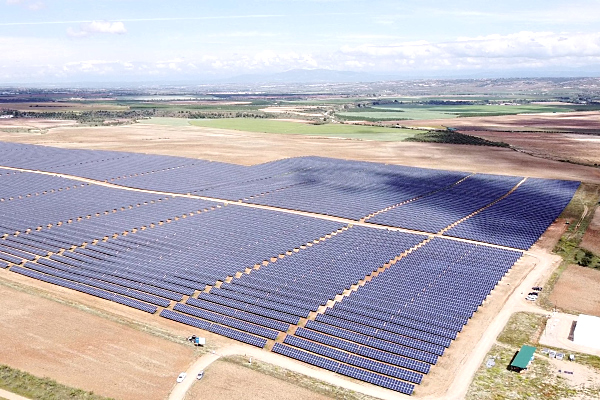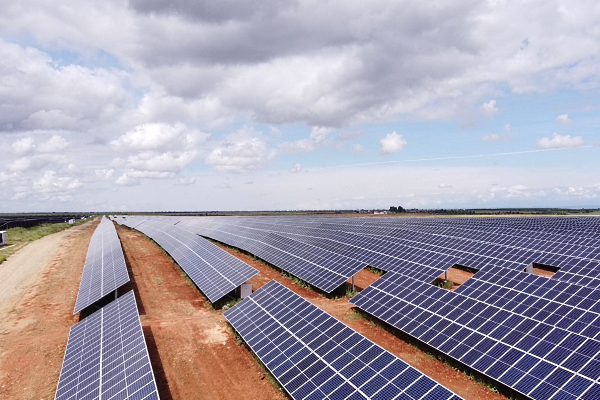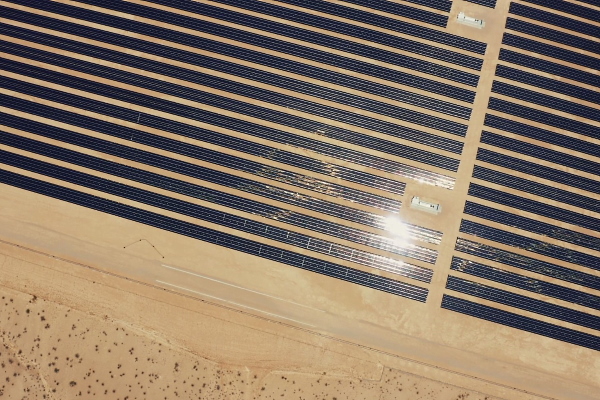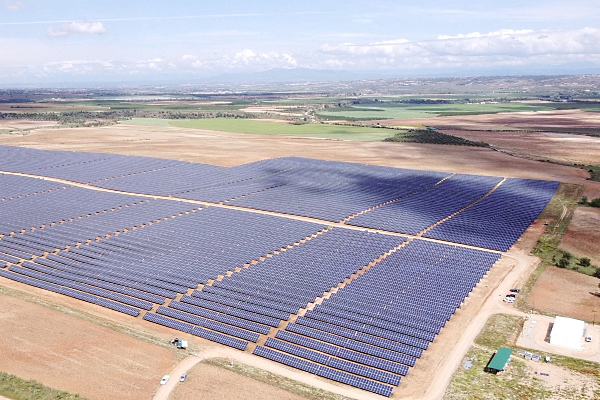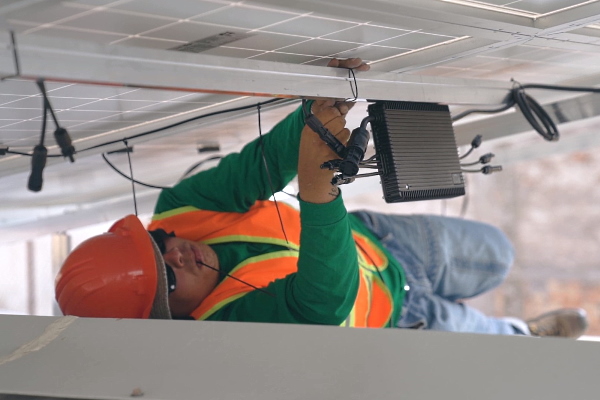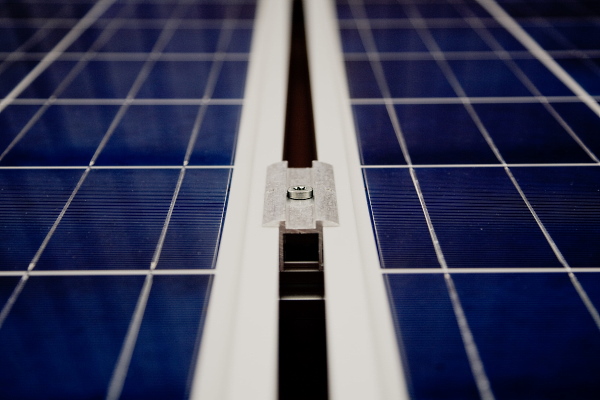To consider an application for financing, fill out the form and send it to us by e-mail along with the project brief, or contact our experts
- List of largest solar power plants in Latin America
- The largest solar power plants in Brazil
- The largest solar power plants in Mexico
- The largest solar power plants in Argentina
- Solar power plants in Bolivia
- Solar power plants in Venezuela
- Solar power plants in Guatemala
- Solar power plants in Honduras
- Solar power plants in the Dominican Republic
- Solar power plants in Colombia
- Solar power plants in Nicaragua
- Solar power plants in Panama
- Solar power plants in Peru
- Solar power plants in El Salvador
- Solar power plants in Uruguay
- The largest solar power plants in Chile
- Solar power plants in Ecuador
- The cost of building solar power plants in Latin America
In 2005, global investment in solar energy reached $ 10 billion for the first time, and in 2017, private customers, energy companies and governments have invested more than $ 180 billion in the sector.
As prices fall, building solar PV is becoming more profitable for developing countries.
According to the World Bank, 20% of the world's population lives in 70 countries with ideal conditions for using solar energy.
In these countries, the average daily solar energy production exceeds 4.5 MWh for each MW of installed capacity.
This rating is topped by the countries of the Middle East, North Africa, as well as Afghanistan, Argentina, Australia, Chile, Iran, Mexico, Mongolia, Pakistan, Peru, some of the island states of the Pacific Ocean and the Atlantic Ocean.
In most Latin American countries, solar energy is growing rapidly, thanks to a combination of prices, resources and favorable government policies. Over the past decade, the region has undergone profound reforms that have led to the exponential development of renewable energy sources, mainly photovoltaics.
Along with the growth of stand-alone power systems, the construction of large solar power plants in Latin America is one of the leading trends in the development of the local energy sector. As of 2018, the largest project in Latin America and the Caribbean was the Villanueva solar PV plant with an installed capacity of 828 MW, located in Viesque (Mexico).
In 2019, at COP 25 in Madrid, ten Latin American and Caribbean countries announced plans to achieve 70% renewable energy in their energy mix by 2030. Since energy accounts for 75% of global CO2 emissions and 56% of CO2 emissions in the region, the use of RES can significantly reduce greenhouse gas emissions.
The agreement, which includes Chile, Colombia, Costa Rica, Dominican Republic, Ecuador, Guatemala, Haiti, Honduras, Paraguay and Peru, is open for other countries in the region to work together to achieve the goals set out in the Paris Agreement.
LBFL, a company with a strong international presence, offers a full range of financing and construction services of solar power plants, transformer substations and power lines in Latin America.
More than 20 years of experience in the financial sector, advanced European technologies, individual approach and comprehensive services.
To learn more about the benefits of working with LBFL, please contact our representatives at any time.
List of largest solar power plants in Latin America
At the dawn of the solar energy era, in the 1980s, numerous technical constraints made building large photovoltaic systems impossible.Over the decades, advances in technology and materials have made multi-megawatt projects not only affordable but also very profitable for investors.
The construction of large facilities means a significant reduction in costs per 1 MW of installed capacity due to a decrease in the costs of engineering design, infrastructure development, environmental protection measures, etc. Power plants with a capacity of more than 200 MW are generally more competitive.
Currently, 11 such solar PV plants operate in Latin America, mainly in Brazil and Mexico.
Several more projects are in the planning stages (for example, the El Aromo solar power plant in Ecuador).
Table: The largest solar PV plants in Latin America (2020) *
| № | Power plant name | Country | Installed capacity, MW | Year of commissioning |
| 1 | Villanueva Solar Park | Mexico | 828 | 2018 |
| 2 | São Gonçalo Solar Park | Brazil | 608 | 2020 |
| 3 | Puerto Libertad PV complex | Mexico | 405 | 2018 |
| 4 | Pirapora Solar project | Brazil | 400 | 2018 |
| 5 | Potosi PV Solar Plant | Mexico | 342 | 2019 |
| 6 | Cauchari Solar project | Argentina | 300 | 2020 |
| 7 | Nova Olinda Solar Farm | Brazil | 292 | 2017 |
| 8 | Don José Solar Farm | Mexico | 260 | 2018 |
| 9 | Ituverava Solar Farm | Brazil | 254 | 2017 |
| 10 | El Romero Solar Farm | Chile | 246 | 2016 |
| 11 | Magdalena II | Mexico | 220 | 2019 |
* - the table includes solar power plants with an installed capacity of 200 MW.
The global trend towards enlargement of solar power plants is obvious. In 2018, 30 facilities with an installed capacity of 200 MW and more were opened around the world.
In 2019, despite a slight slowdown in the global economy, this number increased to 35.
The largest solar power plants in Brazil
Brazil, along with Mexico and Argentina, is one of the three leading countries in the field of renewable energy sources in Latin America.This country is actively developing both wind energy and photovoltaics. According to ABSOLAR forecasts, by 2040 the share of solar electricity in Brazil's energy balance should increase to 32% from the current 1.5%.
There are currently over 20,000 solar energy companies in Brazil.
The most prominent are the large equipment manufacturers and installers of small-scale systems, but there are also large EPC contractors specializing in the construction of multi-megawatt photovoltaic systems.
The main solar energy companies are concentrated in the state of São Paulo, as is the largest energy company in Brazil, CPFL Energias Renováveis SA. The company has installed over 2.1 GW in wind farms, small hydropower and biomass power plants throughout Brazil, in addition to 2.6 GW in ongoing solar, wind and hydropower projects.
Brazil has also built one of the largest photovoltaic panel factories located in Sorocaba, in the interior of São Paulo state. Opened by Canadian Solar in December 2017, it produces over 1 million PV panels annually. The investment in the construction of this plant, attracted with the assistance of the Brazilian Trade and Investment Promotion Agency (Apex), amounted to BRL 80 million.
Usina São Gonçalo: the largest solar power plant in Brazil
Located in São Gonçalo do Gurgueya (Piauí), São Gonçalo Solar Park o is currently the largest solar power plant in Brazil with an annual production of 1,200 GWh.This power plant consists of highly efficient double-sided photovoltaic panels that collect light from both sides.
With an installed capacity of 475 MW, Usina São Gonçalo provides green energy to hundreds of thousands of Brazilian households while helping to preserve the environment by preventing 600,000 tonnes of CO2 from being emitted annually.
According to the plans, 265 MW of installed capacity is intended to supply electricity to the national electricity grid (SIN), while the remaining 210 MW will go to the free energy market. The construction of the facility was carried out by Enel Green Power. The total investment was BRL 1.4 billion, or US 250 million dollars.
In August 2019, Enel announced the start of construction of a 133 MW expansion of the São Gonçalo Solar Park. The company has invested BRL 422 million in the project, or 110 million dollars. This expansion increases the total installed capacity of São Gonçalo to 608 MW.
According to the Brazilian Solar Photovoltaic Energy Association (ABSOLAR), the new project puts Piauí State at the forefront of centralized solar power generation in Brazil. The state has about 1 GW of installed solar capacity, followed by Ceara with 829 MW and Bahia with 776 MW.
Pirapora solar complex
Complexo Solar Pirapora is a solar park with a total installed capacity of 321 MW, located in the Municipality of Pirapora (Minas Gerais).The solar complex consists of 11 power plants that take advantage of the region's high levels of solar radiation. The complex started producing power in September 2017. Pirapora generates enough energy to meet the annual demand of over 400,000 Brazilian households.
One of the largest solar power plants in Latin America is owned by Omega and EDF EN do Brasil, a subsidiary of EDF Energies Nouvelles. In 2018, Omega acquired a 50% stake in the Pirapora solar complex for $ 283 million.
Nova Olinda
Solar Park Nova Olinda with an installed capacity of 292 MW was built in the municipality of Ribeira do Piauí (Piau State) in 2017.Nova Olinda has 930,000 photovoltaic panels spread over 690 hectares (an area equivalent to 700 football pitches). The laborious construction costing about $ 300 million was carried out in an arid desert area. Today, the wasteland supplies enough electricity to power 300,000 Brazilian homes.
To increase power generation, the panels move with the sun using modern tracking systems.
The electricity generated is fed to the Chesf substation via 47 kilometers of power lines specially laid for the project. It is estimated that the new solar park will prevent 350 thousand tons of CO2 per year from emitting into the atmosphere.
The Nova Olinda solar park is owned by Enel Brasil. It is a conglomerate investing in renewable energy. Enel Brasil has over 2.3 GW of installed renewable energy capacity in Brazil. The group also owns the Bom Jesus da Lapa solar park (168 MW) and the Ituverava solar park (254 MW).
Ituverava
Solar Park Ituverava is a large solar power plant with an installed capacity of 254 MW in the municipality of Tabocas do Brejo Velho, which was commissioned in 2017 by Enel Brasil.Ituverava produces 550 GWh per year, which is enough to supply about 268,000 families. Consisting of 850 thousand solar panels, the power plant covers an area of 579 hectares, which is the equivalent of 700 football fields. It is assumed that the park will avoid emissions of 318 thousand tons of CO2 per year.
Investment in the project amounted to $ 400 million.
Lapa solar complex
Complexo Solar Lapa consists of the parks Bom Jesus da Lapa (80 MW) and Lapa (78 MW), which make the best use of the region's solar resources.The complex began generating power in 2017.
Today, the power plant produces about 340 GW per year, enough energy to meet the annual demand of over 166,000 Brazilian homes. The project avoids the emission of 198 thousand tons of CO2 into the atmosphere annually.
The Lapa solar complex is owned by Enel Green Power, which has estimated the construction investment at BRL $ 630 million, or $ 113 million.
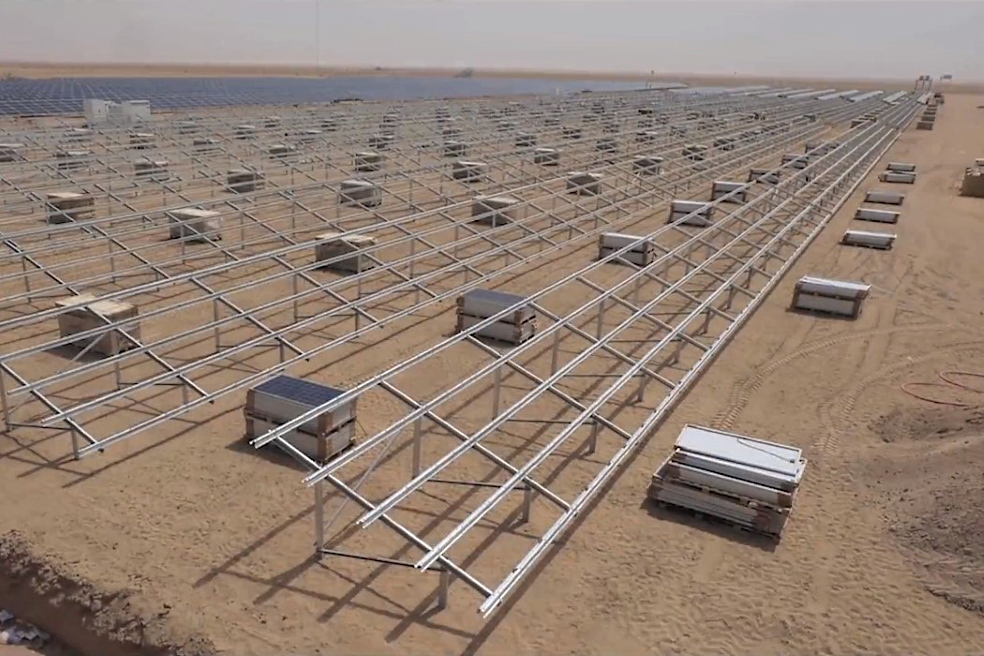
The largest solar power plants in Mexico
As one of the leaders in solar energy in Latin America, Mexico has an extensive network of photovoltaic systems throughout the country.As of July 2020, the sector had 5,717 MW of installed capacity in more than 16 states.
Against the backdrop of a sharp decline in the cost of building solar power plants in Mexico (this figure fell by 85% over the past 10 years), the country was able to achieve record low prices for solar electricity - less than $ 20 per MWh.
Photovoltaics creates about 65,000 jobs, and direct investment in the sector reaches $ 9 billion. Most of the investments are in large-scale projects, including the construction of the largest solar power plants in Latin America (Villanueva, Puerto Liberdad, San Luis Potosi, etc.)
Mexico today has more than 130 large private solar and wind power plants, 69 of which use photovoltaic technology.
Villanueva solar power plant
In 2018, the Italian renewable energy company Enel inaugurated the largest solar power plant in Latin America.Villanueva is a giant solar park with an installed capacity of 828 MW in the south of Coahuila. The park consists of more than 2.3 million photovoltaic modules installed on an area of 2,400 hectares.
Villanueva is a pioneering construction site, part of the global Enel Green Power Evolution project, which has implemented a pilot program to use digital technology and automation in construction processes.
During the construction of the Villanueva solar plant, Enel used a “sustainable development” model that pays attention to environmental impact, economic growth of local communities and minimization of carbon dioxide emissions.
The construction cost of the power plant exceeded $ 650 million.
Puerto Liberdad photovoltaic power plant
The new energy project, located in the Mexican state of Sonora, was implemented by the company Acciona Energy Mexico in partnership with Tuto Energy.The solar power plant with an installed capacity of 405 MW meets the energy needs of 583 thousand local households.
The Puerto Libertad project was a kind of testing ground for Acciona, where the company used the most advanced technologies for the construction and installation of photovoltaic modules. Thanks to innovative techniques, the company installed over 1 million panels in just two months.
The construction cost was about $ 350 million.
Large solar power plant in San Luis Potosi
Potosí Solar is a large 342 MW installed project built in the state of San Luis Potosí.Situated on an area of 850 hectares, this solar park produces 815 GWh of renewable energy annually, meeting the energy needs of more than 76,000 households.
The photovoltaic system is based on inexpensive solar panels equipped with monoaxial tracking systems to improve energy generation efficiency. The power plant helps to reduce CO2 emissions by 97 thousand tons per year.
Don Jose solar power plant
In 2018, Enel Green Power México commissioned the Don Jose solar power plant near the municipality of San Luis de la Paz (Guanajuato state).The 1,300-hectare power plant has 850,000 panels arranged in two rows with trackers that rotate 65 degrees.
The project cost was $ 220 million.
The installed capacity at the time of commissioning was 238 MW, making Don José one of the largest solar power plants in Latin America.
This project has become an example of sustainable development and cooperation between energy companies and local communities. In particular, Enel has implemented a number of initiatives to protect local flora, relocating 1000 plant species from the construction area. The company assisted local residents during the rainy season and took an active part in social and cultural events.
Magdalena II solar plant
Magdalena II is one of the last major energy projects implemented in Mexico by Enel Green Power.The construction of a new power plant with an installed capacity of 220 MW began in November 2018, and the facility was commissioned at the end of 2019.
The $ 165 million project provides cheap solar power to tens of thousands of Mexican households, creating 200 direct jobs in the region. The green energy produced here should reduce annual carbon dioxide emissions into the atmosphere by 300 thousand tons.
The Magdalena II solar power plant was built using double-sided photovoltaic modules and unique SF7 solar trackers, which are mounted at a significant height.
Thanks to innovative technologies, electricity production increases by 10-20% compared to the average.
The largest solar power plants in Argentina
Most solar energy facilities in Argentina are focused on supplying electricity to the national interconnected system (sistema argentino de interconexión, SADI).This sector is dominated by medium-sized solar photovoltaic plants with a capacity of several tens of megawatts, but in recent years there has been a trend towards the construction of larger facilities. On a small scale, through the installation of individual photovoltaic panels, solar energy is widely used to meet the demand of homes, schools or hospitals without access to the grid.
The development of the solar energy sector in this Latin American country is due to several factors at once. First, the country has significant solar resources. Secondly, many remote settlements do not have reliable access to the power grid and therefore rely primarily on autonomous power generation.
The production of electricity from renewable sources is defined by local legislation as a national interest. The country has a number of departments and scientific institutions that contribute to the development of RES.
The National Institute of Industrial Technology (Instituto Nacional de Tecnología Industrial, INTI) assists local companies in research and development of innovative technologies related to solar energy.
The Department of Solar Energy (Departamento de Energía Solar, DES) promotes the use of photovoltaic solar energy to its adoption throughout the country in the medium to long term.
Through the collaboration of private companies, government agencies and INTI, Argentina has opened a collector and solar thermal equipment (EST) laboratory that examines the performance and other parameters of equipment.
Argentina was one of the first countries in Latin America to start installing photovoltaic systems. In 1988, in the village of La Cumbrecita (province of Cordoba), Marzotto Solar, today known as ADMSolar, installed one of the very first solar panels in the country. By the 1990s, a large number of panels were installed in rural homes to complement conventional diesel generators.
In the 2000s, the federal PERMER program was developed with the goal of facilitating access to energy for remote rural populations. The program extends to small manufacturing businesses, isolated homes, hospitals, police stations and rural schools.
Argentina is actively building solar thermal collectors, which are usually used to obtain hot water or to heat residential premises.
According to a study by the National Institute of Industrial Technology, the number of solar thermal collectors grew by 100% annually between 2012 and 2015.
Construction of solar power plants in Argentina
As for large solar projects, they started to appear mainly in the last decade.Argentina has enormous potential for solar power generation, especially in northwest Argentina and Cuyo, where global horizontal irradiation ranges from 2,400 to 2,700 kWh / m2.
Reducing the cost of generating photovoltaic energy, in addition to developing more efficient technologies, increases the viability of this form of energy production, making it more competitive than traditional fossil fuel power plants.
But until 2016, electricity generated from renewable sources (wind and solar) accounted for only 0.4% of Argentina's energy balance, with wind farms accounting for the largest contribution.
Table: existing and planned SPPs in Argentina (2019) *
| Power plant name | Installed capacity, MW | Location (province) | Power plant operator |
| Cauchari | 300 | Jujuy | JEMSE |
| Altiplano I | 100 | Salta | Neoen |
| Guañizuil II | 100 | San Juan | AMartifer Renewables SGPS |
| Ullum X | 100 | San Juan | Latinoamericana de Energía |
| La Pirka | 100 | Catamarca | Latinoamericana de Energía |
| Iglesia - Estancia Guañizuil | 80 | San Juan | Jinko Solar |
| Verano Capital Solar I | 100 | Mendoza | Verano Capital Solar |
| Cafayate | 80 | Salta | Canadian Solar |
| La Puna Solar | 80 | Salta | Neoen |
| Los Zorritos | 50 | Catamarca | Latinoamericana de Energía |
* - only facilities with an installed capacity of more than 50 MW are shown.
As of mid-2019, there were 18 solar parks of various sizes throughout Argentina.
Cauchari: the largest solar power plant in Latin America
In November 2019, Argentina opened the largest solar photovoltaic plant with an installed capacity of 315 MW with a total number of photovoltaic panels of about 1.18 million pieces.Cauchari Solar Park consists of three power plants named Cauchari I, II and III, each 105 MW.
The project was implemented by the Chinese engineering company POWERCHINA. The EPC contract included engineering design, procurement and delivery of all equipment and materials, construction and commissioning of the power plant. World renowned company Huawei participated in the project, providing 6,648 inverters.
The Cauchari Solar Park in the province of Jujuy generates enough electricity to power 260,000 Argentine homes. The opening ceremony was hosted by Governor Jujuy Gerardo Morales, with the participation of Prime Minister Marcos Peña and Energy Minister Gustavo Lopetegui.
According to the country's leaders, the province of Jujuy can make a significant contribution to the development of renewable energy thanks to its unlimited solar resources. This project is a clear confirmation of Argentina's commitment to the development of photovoltaic projects nationwide.
The scale of the project is truly impressive.
More than a million panels, located in Pune Jujuy at an altitude of 4020 meters above sea level, have been installed on 152,000 steel piles up to 3 meters long. The power plant creates jobs for 1,200 people, including the indigenous peoples of the region.
The Cauchari Solar Park was built with funding from the Chinese bank Eximbank (Export-Import Bank of China).
It is owned by the energy and mining company JEMSE, whose project has been approved under the RenovAr program.
Altiplano 200: the construction continues
Solar power plants La Puna and Altiplano I in Olacapato (Salta province) will soon add up to 208 MW of installed capacity, becoming one of the largest solar energy projects in Latin America.As of June 2020, large-scale construction in Salta was in full swing.
The power plants located in the Los Andes department, near the city of Olacapato, will soon receive 554,580 monocrystalline modules with a uniaxial sun tracking system.
With a total installed capacity of 208 MW, the Altiplano 200 solar park will supply low-cost energy to more than 100,000 households. During the construction period, 450 jobs have already been created at the facility.
The construction of the Altiplano 200 requires an investment of up to $ 300 million.
According to the plans of the French company Neoen, which received the right to implement the project, commercial operation will begin in 2020. The work began in November 2018, and the main equipment arrived in February 2019.
Neoen announced the attraction of financing from several international partners, including development bank Proparco (France), DEG (Germany), ICCF, French company Société Générale and German state-owned bank KfW. The Altiplano 200 project received a $ 76 million guarantee from the World Bank.
Funding is partially provided in accordance with the terms of the BPIAE Facility Agreement. It is one of the very first solar power plants in the world to benefit from this kind of funding.
The power plant will be connected to Argentina's high voltage grid (SADI) via a 33/345 kV electrical substation to transfer the generated electricity to the national operator CAMMESA. This is a GIS (Gas Insulated Swichgear) substation equipped with state-of-the-art technology, the first of its kind in the province.
Our team is also involved in other major energy projects in Latin America, which we will mention in this publication.
Guanizuil II photovoltaic power plant
In 2019, Argentina implemented another large-scale solar energy project.We are talking about the Guañizuil II solar power plant in San Juan with an installed capacity of 117 MW, consisting of almost 350 thousand photovoltaic panels. The project provides renewable energy to 70,000 Argentine homes.
Under the contract, the plant will supply electricity to the Compañía Administradora del Mercado Mayorista Eléctrico (CAMMESA) for 20 years at a fixed price of $ 50 per MWh.
The project was purchased by the Norwegian consortium formed by solar energy developer Scatec Solar and the oil group Equinor (formerly known as Statoil) back in June 2018. The seller was the Portuguese renewable energy company Martifer Renewables SGPS SA. Terms of the deal were not disclosed.
The investment is estimated at approximately $ 95 million.
The project is financed 40% by equity capital of both companies, which contributed 50% each, and another 60% raised by a bridge loan from the same Equinor group.
Solar power plants in Bolivia
Bolivia currently generates more than half of its energy from fossil fuels, which endangers the local environment.Despite the great opportunities, this Latin American country pays very little attention to the construction of new photovoltaic systems.
Bolivia's Energy Development Plan 2025 (Plan Nacional de Energía) requires a more active development of renewable energy sources in order to diversify energy production in the near future.
Since May 2016, the Program for Renewable Energy (PEERR) has been helping to improve the regulatory framework for the development of renewable energy sources and increase their efficiency. The program is currently in its second phase (2019-2021), supporting the Bolivian government to improve the technical, economic and institutional environment for RES integration.
Two-thirds of Bolivia's territory is located in the area with the highest solar radiation on the planet. The level of solar radiation in this area reaches an average of 5.4 kWh / m² per day with 7 hours a day of continuous effective insolation. This creates very promising conditions for the development of solar energy.
Unfortunately, the country today lacks investment in renewable energy.
The personnel of the responsible institutions do not have sufficient experience to develop and implement policies in this sector, as well as to implement specific energy projects.
Oruro photovoltaic power plant (50 MW) opened in Bolivia
In September 2019, Bolivia's Ministry of Energy announced the completion of the first phase of the Oruro solar project with an installed capacity of 50 MW.The power plant, located in the Ankotanga community (Oruro department), has already cost investors $ 42.6 million. Oruro produces about 109 GW of renewable energy annually.
The client was the Bolivian national energy company ENDE Corporación.
The project involved the installation of inexpensive fixed polycrystalline silicon photovoltaic panels.
Along with the Oruro photovoltaic power plant, the government plans to launch a series of energy projects in Uyuni, Junchara, El Sena, Kobiha and other parts of the country.
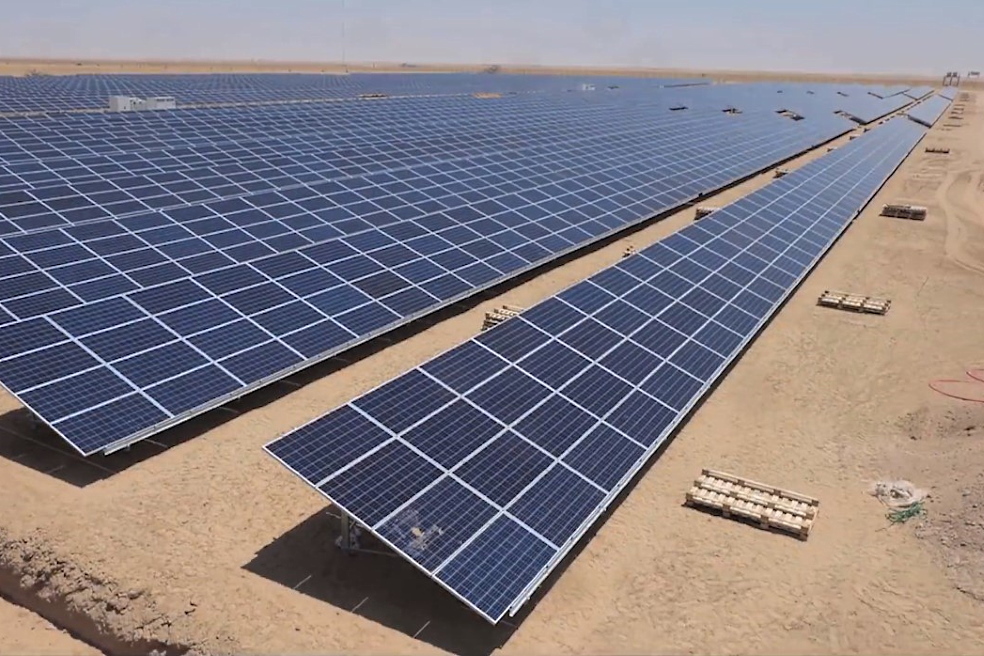
Solar power plants in Venezuela
Venezuela is a tropical country near the equator.UNIQUE geographic location provides opportunities for the construction of solar power plants with maximum efficiency.
20% of the country's territory is exposed to intense solar radiation of 5.1 kWh / m2 per day.
In addition to the unique natural conditions for the implementation of projects in the field of renewable energy sources, Venezuela has all the raw materials necessary for its own production of equipment and components for photovoltaic systems.
It is possible to build large industrial plants for the production of vanadium sheets with a photovoltaic semiconductor layer for power generation. Venezuela has reserves of this rare metal, extracted by separation from oil.
Venezuela is currently aiming to create a fully-fledged and independent solar energy sector, from the production of equipment to the design and construction of photovoltaic systems.
Design and manufacture of photovoltaic panels
In 2018, the country announced the production of its first own solar cell.Development and research took about a year and were carried out at the facilities of the National Center for Optical Technology (CNTO) under the direction of the Venezuelan Center for Astronomical Research (CIDA).
This achievement made it possible to produce photovoltaic cells, which, however, takes a long time due to limited production capacities and technical lag behind the world's leading manufacturers.
The research program is funded by the National Endowment for Science, Technology and Innovation (Fondo Nacional de Ciencia, Tecnología e Innovación FONACIT).
Construction of solar power plants in Venezuela
As part of strengthening the National Electricity System (SEN), since 2019, Venezuela has been considering the possibility of implementing medium and large wind, hydropower, and solar energy projects.So far, we are talking about power plants with a capacity of several megawatts, since until that time the development of solar energy in the country was limited.
The country's leadership mentioned the implementation of distributed energy projects with a capacity of 1.5 to 3 MW for the development of the national industry.
Venezuelan President Nicolas Maduro expressed a desire to accelerate the development of solar energy back in 2013. Since then, however, only small off-grid PV projects have been implemented in isolated regions.
In 2014, the Venezuelan government announced plans to install about 523 megawatts of renewable energy in the period 2013-2019, of which about 478 megawatts will come from wind projects. Since then, however, only a few megawatts have emerged.
The current financial and political difficulties are undoubtedly aggravated by the abundance of hydrocarbons, which looks like a more affordable and cost-effective option at the current stage of the development of photovoltaics.
In addition, nearly 80% of the country's electricity needs are covered by the Simon Bolivar 10 GW hydroelectric power station, which is located on Lake Guri in Bolivar state.
Solar power plants in Guatemala
Talking about the largest solar power plants in Latin America, we cannot ignore Guatemala, a country that invests heavily in the promising photovoltaic sector.Solar energy has been developing in Guatemala since 2013, and the first tender for the purchase of solar energy was held the following year. Today, this country with unlimited solar resources has become one of the leaders in the region in the use of renewable energy sources, practically abandoning fossil fuels.
Photovoltaic systems of various sizes are used here at literally all levels, from large national energy projects to small remote farms.
The country has achieved a lot in this sector. Firstly, the very first photovoltaic irrigation system in Central America was opened in Guatemala in 2018. Secondly, the Horus Energy solar power plant with an installed capacity of 80 MW is one of the three largest in the region.
Horus Energy: the largest solar power plant in Guatemala
In July 2015, a new 30 MW Horus II solar power plant was commissioned in Guatemala.This project is an extension of the 50 MW Horus I, which was launched at the beginning of the same year. The Horus I and Horus II projects, with a combined capacity of 80 MW, are located in the province of Santa Rosa.
The Horus II was equipped with modules from the Chinese manufacturer JA Solar, as well as inverters from the company GPTech. Both manufacturers also supplied modules and inverters for the first phase of the Horus I project.
With the opening of a new phase, Horus Energy becomes the second largest in Central America after the 146 MW solar power plant in Honduras. Guatemala is also the second country with the largest total installed PV capacity in Central America, after Honduras.
The project was born in 2013 when Grupo Onyx, a consortium of Guatemalan companies, decided to invest in the production of photovoltaic energy. For a long time, solar radiation and environmental impact studies were carried out throughout the country until the town of Chiquimulilla was discovered.
Here 175 hectares of land were purchased for the construction of the first phase of the Horus Energy solar power plant. In the beginning, Grupo Onyx invested $ 100 million in the installation of 187,360 high-performance photovoltaic panels with tracking systems.
Their service life is 25 years.
Even before the expansion, Horus I was producing 115 GWh of renewable energy annually, providing electricity to 60,000 Guatemalan households. The facility is completely nature-friendly and does not emit toxic substances.
The generated electricity is fed into the national grid through 1,317 km of transmission lines.
Solar power plants in Honduras
Honduras is considered one of the leaders in solar energy in Latin America after Chile and Mexico.The first investments in photovoltaic systems were attracted in 2015, after which the country added 389 MW of installed capacity in just one year.
According to ENEE, Honduras's commercial and industrial solar market has changed significantly over the years. The country already has a well-developed infrastructure and legal base, reinforced by qualified personnel.
Following reforms led by the government and recommended by the Inter-American Development Bank (IDB), the country has experienced a renewable energy boom. As of the end of 2018, 75% of electricity in Honduras was generated by renewable sources, more than 10% by solar power plants.
Today, not only large power plants are being built in the country, but also numerous autonomous facilities for small industry, commercial buildings, warehouses and residential buildings. In March 2020, Honduras opened the first 10.6 MW solar power plant in the cement sector, which will supply about 20% of the energy consumed at the Argos cement plant in Comayagua.
Nacaome-Valle: the largest solar power plant in Honduras
Vallee has the country's first photovoltaic power plant connected to the local electricity grid. Its installed capacity is 146.4 MW, making it the largest solar power plant in Central America.The Nacaome-Valle solar park consists of more than 480 thousand PV modules located on an area of 600 hectares. The length of the perimeter is 16 km, and the length of internal access roads reaches 22 km. The giant panels generate direct current most of the day, which is then converted to alternating current using 104 inverters. The project includes a state-of-the-art electrical substation converting the voltage from 34.5 kV to 230 kV.
At the time of commissioning in 2015, this solar park met the highest international standards.
For example, the capacity factor was planned at 0.3. The construction was carried out by local specialists with the support of engineers.
The investors in the project were Solar Power SA (SOPOSA) and Compañía Generadora de Energía Solar, SA (COHESSA). The project was partially funded by local and foreign banks. The construction cost was $ 232 million.
The Nacaome-Valle solar park currently covers approximately 10% of Honduras' energy needs. The electricity produced is sufficient to meet the needs of 150,000 local households.
Solar power plants in the Dominican Republic
The Dominican Republic, like the neighboring countries of Central America, has abundant solar resources.The International Renewable Energy Agency (IRENA) sees great potential for expanding photovoltaic systems in this country.
The Dominican Republic has set a target to provide 85% of renewable energy by 2035, mainly from solar, wind and bioenergy. As of 2014, the share of photovoltaic systems in the energy mix of the republic was 0.1%, but in 2020 it reached 24%.
In mid-2019, it became known that the Dominican Republic intends to invest $ 900 million in new renewable energy projects. CNE's Board of Directors has approved the issuance of permits for 12 new projects with a total installed capacity of 874 MW.
Among them, it is worth noting the largest projects in Yaguate (120 MW), Guayubin (136.8 MW) and Bani (200.2 MW), which are planned to be implemented in the near future. It is a very young and dynamic sector with great growth prospects.
Recently, the National Energy Commission (CNE) granted approval for the Cotoperí projects I, II and III with an installed capacity of 54 MW each.
Project of the largest solar power plant in the Dominican Republic
In 2020, the group Elecnor, which implements projects in the field of infrastructure, energy and telecommunications, received an order for the turnkey construction of the Girasol solar park for Empresa Generadora de Electricidad Haina (EGE Haina).The power plant in Yaguate (San Cristobal province) with an installed capacity of 120 MW will be built on a very advantageous 220 hectare site where solar radiation is significantly higher than the Dominican Republic average. The project includes the installation of about 300 thousand photovoltaic modules, a step-up substation and 138 kV transmission lines 10 kilometers long.
This new solar photovoltaic plant will become the largest in the country, increasing the total capacity of solar energy projects connected to SENI by 64% at once.
Interestingly, Elecnor won its first contract in the Dominican Republic in 1980 and has been present in the country since 1985.
It recently completed construction of the 25 MW Canoa SPP.
Washington Capital Energy Park
The Dominican Republic recently commissioned a $ 75 million Washington Capital Energy Park in the province of Santo Domingo.The facility is located in Mata de Palma, 45 minutes from Santo Domingo.
The power plant is designed to produce 110 GWh of energy per year. It covers an area of 67.5 hectares and has 200,694 PV panels manufactured by the Chinese company Risen Energy.
The construction of the power plant was started in 2018 by WCG Energy in collaboration with Dominion. PI Berlin's headquarters provided Dominion with various engineering services for the Washington Capital Energy Park project.
Bayahonda solar park (Bayasol) commissioned in 2020
This year, AES Dominicana announced the commissioning of Bayahonda solar park, one of the largest photovoltaic systems in the Dominican Republic.Located in the municipality of Angostura, it consists of 145,000 inexpensive fixed monocrystalline photovoltaic panels of 405 watts each.
The construction cost was $ 60 million.
Bayahonda (Bayasol) solar park is designed to produce 99.1 GWh of electricity per year.
Solar power plants in Colombia
Colombia is gradually increasing the share of photovoltaics in its energy mix, which today relies on hydropower.As of the end of 2018, about 70% of the total installed capacity came from small hydropower plants scattered across the country.
Thanks to its advantageous geographic location and rich solar resources, the construction of solar power plants in Colombia has been accelerating in recent years. Despite this, the sector is developing at a significantly slower pace than other Latin American countries due to competition from hydropower.
In early 2019, the Colombian government announced plans to add about 1.5 GW of installed capacity from a variety of renewable sources in the near term. Today there is only one large photovoltaic power plant with an installed capacity of 86.2 MW in the country.
El Paso solar power plant
In 2019, Enel Green Power commissioned the El Paso solar power plant, the largest in Colombia.The new facility should produce approximately 176 GW of energy per year, supplying more than 100,000 households.
According to President Ivan Duque Marquez, the construction of the new facility marked a revolution in the field of renewable energy for Colombia. It is the first solar power plant in the country to provide a stable supply of electricity to the national grid.
El Paso will help reduce CO2 emissions by 107 thousand tons per year. The construction of the facility has created about 900 jobs. Enel Green Power Colombia (EGPC) has invested $ 70 million in this project.
Solar power plants in Nicaragua
Despite its natural geographic advantages, in 2019 solar energy accounted for only 1% of Nicaragua's energy mix.The development of this sector is just beginning, and the republic has a long way to go towards energy independence.
Today, companies from Germany, Spain, USA, Canada and other countries are actively involved in the modernization of Nicaragua's power grid and the construction of new power plants. Nicaragua, with the support of the European Union, is implementing an intensive program to promote technical education, especially in the field of renewable energy sources.
The National Program for Sustainable Electrification and Renewable Energy (PNESER) plays an important role in the development of the solar energy sector, stimulating funding for microgrids in isolated areas.
Nicaragua attracts foreign investment and loans from the Inter-American Development Bank.
The current government measures should increase the share of renewable energy sources in the national energy sector and reduce the country's dependence on fossil fuels.
Project of the largest power plant in Nicaragua
In 2019, an agreement was signed between EPR and the Ministry of Energy and Mines for the construction of a 100 MW solar power plant in Nicaragua with an investment of $ 100 million.The photovoltaic project, which will be one of the largest in Central America, began with the construction of the first phase (50MW).
Project investor Pedro Pajares expressed confidence in the construction of solar power plants in Nicaragua. Israeli investor Baruch Rappoport mentioned that in addition to these investments in the near future, they will announce new investments in the mining and other sectors of the local economy.
The facility will be located between San Benito and Tipitapa. It consists of 143 blocks with 170 thousand photovoltaic panels.
At the end of 2019, general construction work began.
The commissioning of this power plant will mean a reduction in hydrocarbon production by 140 thousand barrels of oil annually.
Solar power plants in Panama
Panama, with an estimated 4.2 million people, is the economic growth leader in Latin America with a stable outlook for the near future, despite the Covid-19 pandemic.Within the framework of the National Energy Plan for 2015-2050, the country intends to transfer 70% of generating capacity to renewable energy sources. According to forecasts, 77% of RES will come from solar, wind and hydropower.
According to Taiwan-based consultancy PV Infolink, wind and solar power in Panama is in its infancy and the country needs to step up its efforts to diversify its power generation. Today, hydropower dominates among the installed renewable capacities.
In recent years, the government of Panama, together with foreign engineering companies, has implemented a number of projects aimed at increasing the share of renewable energy sources. At the end of 2018, wind and solar power together accounted for 19% of the installed renewable energy capacity in Panama.
In 2013, Panama approved a solar energy law that includes tax breaks and special tenders for solar PV plants.
Local companies are showing a growing interest in solar energy, given the changing mentality of Panamanians and concerns about global climate change.
The International Finance Corporation (IFC) recently signed a loan with the National Bank of Panama to help promote green energy in the private sector. The $ 50 million loan agreed in April 2020 will be used for green buildings and solar power plants.
Also in 2020, AES Panama, a subsidiary of the American energy company AES, announced its intention to invest more than $ 50 million in the construction of four new photovoltaic systems with a total installed capacity of 40 MW.
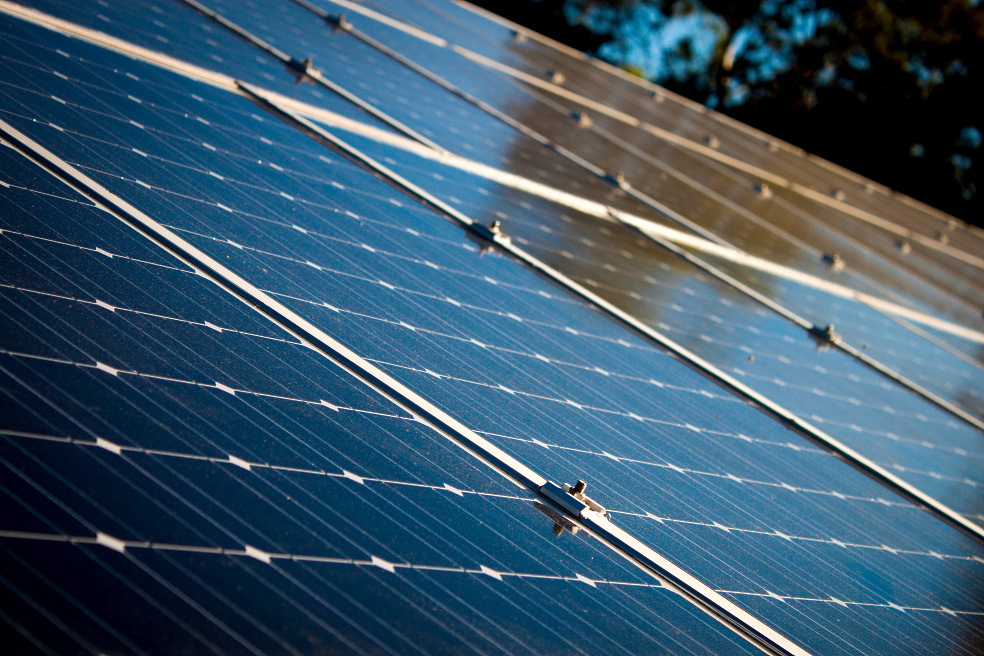
Largest solar power plant in Central America
The company Avanzalia has invested $ 160 million in the construction of the Penonomé solar photovoltaic power plant with an installed capacity of 150 MW.Today it is the largest solar power plant in Central America.
450,000 photovoltaic panels have been installed on a 300-hectare construction site in Cocle province. The project involved the laying of 1,500 kilometers of cable and the construction of a modern step-up electrical substation.
Penonomé was commissioned at the end of 2019, marking a historic achievement for Panama and a new boost for the local economy.
Solar power plants in Peru
Peru is ranked among the countries with the best conditions for the commercial use of solar photovoltaic energy.In recent years, the government has attracted foreign companies to build new solar parks to reduce the role of fossil fuels in the country's energy mix.
The Directorate General for Electricity (DGE) of Peru reports that in 2019, total electricity production, including isolated facilities and the National Interconnected Electrical System (SEIN), was 56,967 GWh, an increase of 3.8% over the previous year.
Thermal power plants produced 21.2 GWh in 2019, while hydropower production added 30.8 GWh, according to DGE.
Solar photovoltaic plants accounted for about 760 GWh, and wind farms - 1.65 GWh. More than 96% of the electricity was supplied to the power grid, and the rest was produced for autonomous power supply. In total, solar energy last year covered 1.3% of Peru's energy consumption.
Solar photovoltaic plant Rubi
In 2018, the largest solar power plant Rubi was opened in the department of Moquegua (province of Mariscal Nieto).Located at an altitude of 1.5 kilometers above sea level, the power plant with an installed capacity of 144.6 MW generates up to 440 GWh of energy annually. The electricity produced covers the needs of 350,000 Peruvian households and prevents the emission of approximately 210,000 tons of carbon dioxide annually.
The solar power plant is connected to a 500/220 kW electrical substation of Montalvo (Moquegua) through a 22-kilometer 220 kW power line. The installed capacity of 144.8 MW is achieved by 560 880 PV modules of 320 W each. The power plant is equipped with modern tracking systems.
The construction cost was $ 165 million. Rubi is helping to diversify the energy mix and improve the stability of the energy supply, in addition to creating 870 direct jobs in the surrounding areas.
One of the largest solar energy projects in Latin America
In early 2020, the -Japanese company Univergy Solar announced ambitious plans to build PV systems with a total installed capacity of about 800 MW.Of particular note is the project of a large solar power plant with an installed capacity of 700 MW, which will be built in Tacna in southern Peru.
Univergy partnered with its local partner Proesmin. In addition to Peru, Univergy is developing energy projects in Mexico, Panama, Colombia, Argentina, Chile and Brazil that will add more than 2,000 MW to local economies.
companies develop solar energy in Peru
In 2020, Peru's Ministry of Energy and Mines gave permission to build two large solar power plants in the province of Arequipa.Continua Energías Positivas, a engineering company, has received the green light for the construction of two CSPs - Pichu Pichu with an installed capacity of 60 MW and Chachani with an installed capacity of 100 MW in the La Jolla area.
According to the company, investments in both of these projects are planned at $ 200 million. The commissioning dates for CSF Continua Pichu Pichu Central Solar and CSF Continua Chachani are still unknown.
Solar power plants in El Salvador
The construction of new solar power plants in El Salvador is proceeding at a record pace, which is facilitated by close public-private partnerships and the attraction of large loans from international financial institutions.Currently, more than 60% of the country's energy production comes from clean and renewable sources, including solar, wind, biomass, biogas and hydropower.
According to the official information, the total installed capacity of the energy sector increased from 1,587 MW in 2014 to 2,085 MW in 2018, representing an impressive increase of 31.4%. The share of renewable energy sources increased from 52% to 64%.
Capella Solar: the largest solar park in El Salvador
In 2020, French company Neoen announced the commissioning of the Capella Solar PV park in El Salvador.Capella Solar consists of two power plants, Albireo 1 and Albireo 2, which have a total installed capacity of 140 MW and provide about 4% of the country's energy supply.
In addition, Capella Solar has the largest energy storage infrastructure in Central America. It is a 3.3 MW / 2.23 MWh lithium-ion battery for backup power.
For this project, 20-year electricity purchase contracts were concluded with local distributors AES, Delsur, EDESAL and B&D at $ 49.55 per MWh.
In November 2018, Neoen secured financing for the project through a line of credit between the Dutch development bank FMO, IDB Invest and Proparco. The total construction cost of the facility is $ 143 million.
Bosphorus solar project commissioned in 2019
The Bosphorus solar project with an installed capacity of 100 MW, intended to power the pumping equipment of the National Aqueduct and Sewerage Administration, was completed at the end of 2019 through the efforts of foreign companies.AES El Salvador and Corporación Multi Inversiones (CMI), a multinational corporation based in Guatemala, announced the joint construction of a 100 MW solar park two years ago.
The first phase of the project, dubbed Bosphorus I, was completed in September 2018 with an investment of $ 48 million. The power plant consisted of 132 thousand polycrystalline PV modules.
In July 2019, AES El Salvador completed the construction of the second phase of the project, consisting of four 10 MW photovoltaic systems. Construction of the third and final phase of the Bosphorus project began in March 2019 and included three 10 MW power plants in the central region of the country.
About 160 million dollars have been invested in the project with a total capacity of 100 MW.
Part of the funding came from the US Overseas Private Investment Corporation (OPIC).
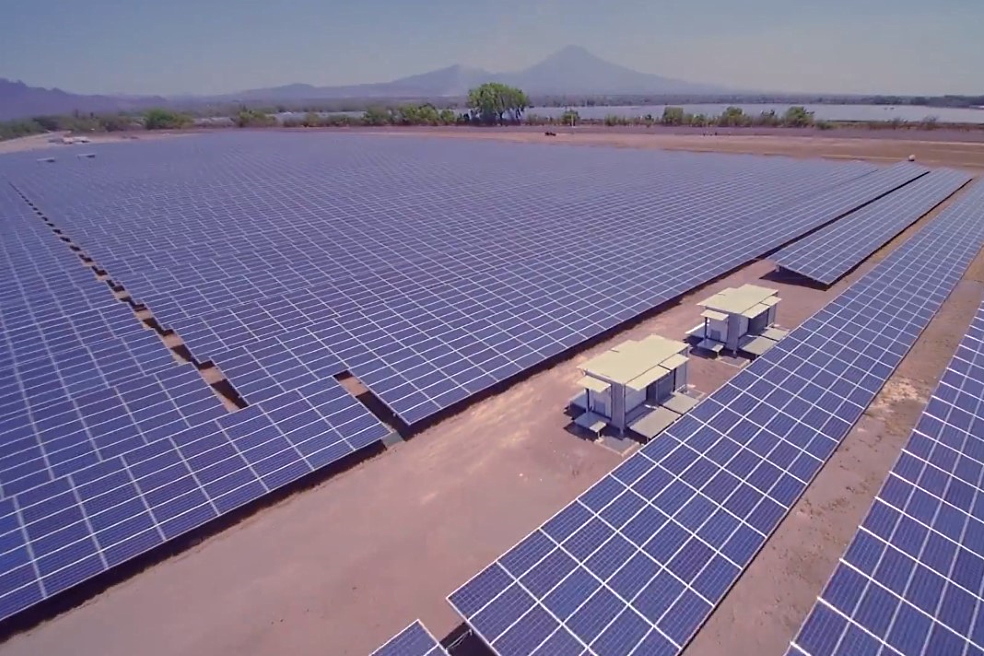
Solar power plants in Uruguay
At the beginning of the last decade, Uruguay was a pioneer country in the development of solar energy in Latin America.It was one of the first countries to hold a dedicated auction for large solar energy projects, and for a time it was one of the region's few PV markets.
According to the 2017 National Energy Balance of Uruguay, solar energy production exceeded fossil fuel electricity generation for the first time. This year alone, solar energy has nearly tripled its installed capacity. Although electricity production grew by 3% in 2017 compared to 2016, the consumption of fossil fuels for this purpose has decreased by 46%.
While there is currently some overcapacity, the PV sector looks promising for investors.
La Jacinta Solar Power Project
At the end of 2015, the company Fotovatio Renewable Ventures announced the completion of the 64 MW La Jacinta solar PV plant.The facility is located in the department of Salto, in the north of Uruguay.
For the construction, 216,000 photovoltaic modules from the Chinese manufacturer BYD and 50 inverters from the company Ingeteam were used.
In January 2015, the project received funding from the Inter-American Development Bank (IDB) in the amount of $ 82 million. The solar park has a Power Purchase Agreement (PPA) with the local energy company Administración de Usinas y Transmisiones Eléctricas for a period of 26 years.
The largest solar power plants in Chile
Chile's solar energy sector has great potential due to the ideal natural conditions concentrated in the northern part of the country (the Atacama Desert and its surroundings).Chile is now positioning itself as one of the leading countries in the world in the use of solar energy with a growing number of existing and planned solar PV plants.
Chile also has some of the world's largest reserves of mercury. This metal is often used in the manufacture of photovoltaic panels and other equipment, both for the production and storage of generated solar energy.
Today, the country is experiencing a rapid increase in the use of solar energy in homes and public buildings, mainly for the production of hot water in order to reduce monthly gas or electricity costs.
Over the past decade, the cost of solar technology has decreased and, thanks to this, installed capacity has increased markedly. In Chile, as of December 2019, the installed capacity of all solar power plants reached 2,654 MW, which corresponded to 11% of the national electricity production.
The Chilean authorities do everything possible to promote the development of renewable energy sources, including photovoltaics. A number of agencies and associations have been established in the country to promote this sector.
For example, ACESOL brings together organizations and private companies interested in the prosperity of solar energy in Chile.
El Romero Solar Farm: largest solar power plant in Chile
El Romero Solar Farm with an installed capacity of 247 MW is located in the vicinity of Vallenara (Huasco).It was previously considered the largest in Latin America.
The facility was built in the Atacama Desert on an area of 280 hectares. Built with unique engineering and logistic solutions in the midst of a lifeless desert, El Romero Solar Farm produces 493 GWh of renewable energy annually, supplying 240,000 Chilean households.
This solar power plant consists of 776,000 polycrystalline silicon photovoltaic modules. The total surface area for absorbing solar energy is 1.5 million square meters, which is the equivalent of 211 football pitches.
The construction of the power plant was carried out by the engineering firm Acciona. Electricity production started in November 2016.
Finis Terrae photovoltaic plant
This huge solar park with an installed capacity of 160 MW was commissioned in early 2016.Located in the municipality of Maria Elena (Antofagasta), Finis Terrae supplies electricity to the Norte Grande interconnection grid.
With an average electricity production of 400 GWh annually, the power plant supplies 189 thousand Chilean households.
The solar park is owned by five companies and is controlled by Enel Green Power Chile. The construction cost was $ 270 million, which was raised from various sources.
Finis Terrae consists of 668,160 photovoltaic modules of 240W each, mounted on tilted single axis trackers, grouped in 180 panels. The total area of the power plant reaches 557 hectares.
The panels are composed of glass (82%), aluminum (12%), silicon (2%) and other materials (4%). Uniaxial tracking systems are tilted up to 20 degrees to make the most efficient use of radiation throughout the entire path of the sun. The total weight of the PV modules is 12 695 tons, the weight of the assembly structures is 18 560 tons, and the weight of the transformer substation is 7 424 tons.
A 23 kV / 220 kV GIS step-up electrical substation connects one of the largest power plants in Latin America to the grid via a transmission line over 7 kilometers long. The substation consists of four transformers and covers an area of 4,900 square meters.
The infrastructure is shared with the Blue Sky solar park (formerly known as Crucero Este).
The cost of building the substation was over $ 12 million.
Luz del Norte: a new level of reliability
The Luz del Norte project in Chile is the first solar power plant in the world to offer ancillary grid services.Chile's National Electricity Coordinator in 2020 authorized First Solar's power plants to provide ancillary grid services on a commercial basis. The solar power plant has been proven to work more reliably than gas turbine technology.
The facility was tested in a 2016 demonstration project by the California Independent System Operator (CAISO), the US Department of Energy's National Renewable Energy Laboratory (NREL), and First Solar. The study examined the power plant's ability to respond to load fluctuations and provide stable electrical current parameters. It has been found that the photovoltaic system performs better than gas turbine systems that are typically used to respond to load changes.
The American company First Solar fully commissioned Luz del Norte in 2016. The project, with an installed capacity of 141 MW, was one of the first in Chile to be connected to SIC.
The power plant was built 58 kilometers from the city of Copiapo.
Bolero solar plant
In 2016, French company EDF Energies Nouvelles (EDF EN) opened a 146 MW Bolero solar power plant located in the Atacama Desert in northern Chile.EDF EN and the Japanese company Marubeni have equal shares in this project.
The power plant, which covers an area of more than 500 hectares, includes about 475 thousand photovoltaic modules equipped with tracking systems. Maintenance and operation is entrusted to EDF EN Chile.
Chile has built several large solar power plants in recent years, including the Conejo Solar (Taltal) and Quilapilun (Colina) energy projects.
Solar power plants in Ecuador
Despite the high level of solar radiation, Ecuador still does not use its natural potential for the development of photovoltaics.Ecuador accounts for about 0.08% of the world's greenhouse gas emissions. Although these numbers are low compared to other countries, Ecuador is committed to reducing emissions by 9% by 2025 by modernizing the energy sector.
In 2020, the Inter-American Development Bank approved a $ 280 million loan to Ecuador to support measures to transform the energy structure, improve energy efficiency and expand access to renewable energy sources.
The loan will support the country in meeting its climate change goals and implementing policy reforms in the energy sector. According to IRENA, at the end of 2018, only 26 MW of solar power had been installed in Ecuador.
Ecuador plans to build 200 MW solar power plant
In April 2020, it became known that Ecuador was extending the deadline for submitting bids for the construction of the largest photovoltaic system with an installed capacity of 200 MW.The new deadline is set for May 28 next year.
The Ministry of Energy and Non-Renewable Natural Resources of Ecuador is planning the construction of the El Aromo solar power plant (200 MW) and two 110 MW Villonaco II and III wind projects in the provinces of Manabi and Loja, respectively.
The ministry explains that the decision was taken against the backdrop of the health crisis caused by the Covid-19 pandemic, which affects the normal development of the economy on a global scale.
Eight companies were pre-selected for participation in the tender: Total, Neoen, Solarpack, EDP, Cobra Zero-E Aromo, China Harbor Engineering, Consorcio Al Faisal-CRBC-GCL and China Huadian Hong Kong Company Limited.
The state-owned corporación CELEC will be the sole buyer of energy for 20 years.
The cost of building solar power plants in Latin America
The cost of a solar power plant mainly depends on the technology and equipment used.The main consideration for investors is the ratio of actual power generation to construction costs.
The costs increase significantly if the investor decides to install modern tracking systems instead of fixed panels. Solar trackers are more expensive to install, but this technology provides higher energy generation.
Due to the very high level of solar radiation, most countries in the region provide attractive conditions for the development of photovoltaics with capacity factors higher than European ones.
Construction cost (millions of dollars per 1 MW of installed capacity):
• Capella Solar Park — 1.02
• Don José Solar Farm — 1.08
• Rubi Solar PV Plant — 1.14
• Solar Park Nova Olinda — 1.02
• Villanueva Solar Park — 1.27
Today, this figure stands at about $ 1 million per megawatt of installed capacity, with costs tending to decrease due to innovations in electrical equipment and construction methods.
The most important factor is the scale of the project. The largest solar power plants in Latin America can also be called the most profitable energy projects, since each megawatt of installed capacity is significantly cheaper here compared to small-scale systems.
In addition, the availability of cheap labor in the region helps to reduce costs, both during the construction phase and during the operation and maintenance phase.
Contact our specialists to calculate the cost of a solar power plant and the necessary technical advice.



